#witches amulet
Explore tagged Tumblr posts
Text
learn about your friend's secret on
SIRIUS SUNDAY!

#you ever think abt how the last thing that happened in sirius' original route was noel kind of literally#Choosing Death by touching sirius' amulet after seeing the two people closest to him be afraid by his form#cause i do. all the time.#sirius gibson#sirius sunday#witch's heart#witch's heart spoilers#wilardo's conclusion spoilers#witchs heart#wh#noel levine
45 notes
·
View notes
Text
Ancient Amulets and Talismans: The Magical Legacy of Protective and Prosperous Symbols
Exploring the Historical Significance and Modern Interpretations of Greek, Greco-Roman, and Celtic Amulets and Talismans in People Magical Practices and Cultural Beliefs
In recent times, amulets have once again become consumer items. I say "once again" because the sale of amulets spans thousands of years. However, unlike in previous centuries, they have lost their sacred character. Since people sometimes ask me for a "prosperity amulet"—having seen them for sale elsewhere—I believe it's an excellent opportunity to discuss the topic.
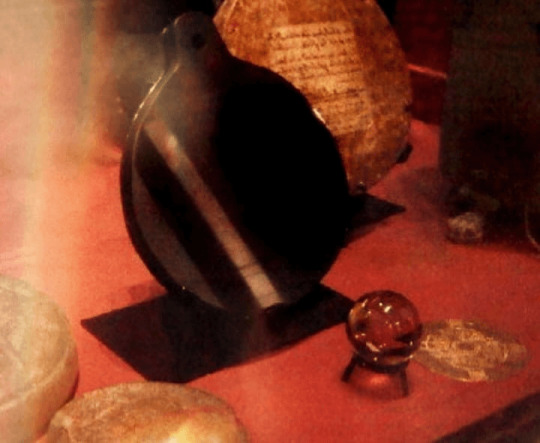
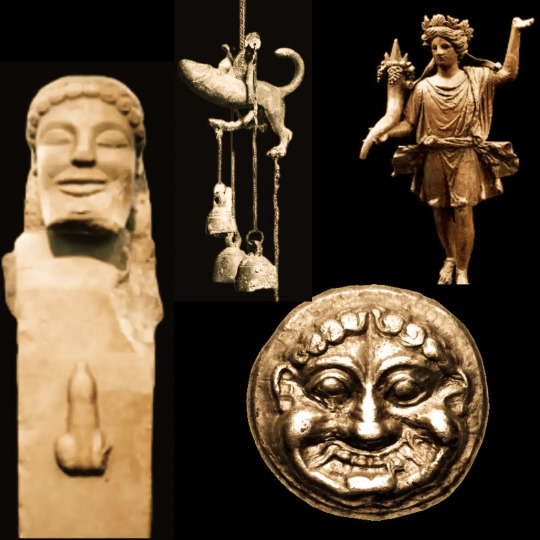
Left: Photo of Dr. John Dee's Black Obsidian Scrying Mirror on Display at the British Museum; Right: On the left, a marble herma with the head of Hermes and an erect phallus on the front of the pillar; above, a Roman tintinnabulum with a hybrid shape of an erect phallus and lion; below, a wappenmünzen with Medusa's effigy; to the right, a lar or Roman representation of the family spirit protector of the home holding a cornucopia.
Surprisingly, I agree with the definition of amulets, except for the "supernatural effects" attributed to them. We attribute certain powers or qualities to the natural world, and all objects from the natural world share the same symbolism, being associated with the culture we belong to and our personal and family beliefs.
In magical arts, there are two distinct types of these magical objects: amulets and talismans. To simplify, amulets are designed to ward off negativity, while talismans attract all kinds of fortunes. They are two sides of the same coin but are not the same. Ancient amulets require a broader explanation—I'll touch on that towards the end—but for practical purposes, the operative definition in the context of current magic is that amulets repel and talismans attract.
To acquire its power, this magical object requires four complementary actions:
Apotropaic: This is the most popular type and does not require formal magical knowledge. For example, a stone naturally holed by erosion. The powers considered are part of the culture, like believing in the protection of a St. Christopher medallion, which can have apotropaic qualities either inherently (animism) or by being "blessed" by a priest.
Liturgical: This involves sanctifying the object through religious rites, invoking the power of entities, gods, or spirits. An example is the aforementioned blessing of the St. Christopher medallion, where the priest acts as an intermediary and channel for the saint's power.
Energetic: Known as "charging" or "energizing," this action seeks to multiply the amulet's power. This does not necessarily involve a religious ritual. For example, leaving a stone exposed overnight to moonlight to "charge" it.
Sympathetic: This transfers the symbolic to reality through signs, words, the addition of objects, or spells. For example, engraving a talisman with the image of a desired book to attract that book, representing the desired object and making it appear in the material world.
Some details: If you buy an amulet because someone told you it's protective, you're trusting the seller's word, not the amulet's properties. If you value the seller's word—as some do with a priest—then you indeed have a powerful object. You can also buy a personalized amulet and "charge" it yourself, but you'd be purchasing the container of power, not the amulet itself. If you learned as a child that a horseshoe above the door brings good luck, then go ahead, because your subconscious likely considers that horseshoe very protective.
For millennia, writing was considered a magical art. The privileged classes guarded it zealously, believing that certain symbols possessed inherent magical powers. This tradition persists even in modern movies, where we see Count Dracula writhing in pain at the sight of a cross. This is the animistic theory of talismans’ operation, prevalent in popular and pagan witchcraft, both ancient and modern.
Today, many magicians reject this theory in favor of the energetic theory of talismans’ operation. They consider the most important thing is to charge the talisman or amulet, that is, to introduce magical energy into the chosen object to make it powerful. The time spent carefully drawing specific symbols on the object is an effective way to create and transmit energy. Adding this energy to the one generated and directed by the magician during the charging ritual explains why this magical technique is so powerful. However, no method—be it Witchcraft or Ritual Magick—is superior to another.
Stones for Making Amulets and Talismans
In historical families of the Celtic areas of the British Isles, the tradition of attributing powers to certain stones has a long history. The most famous of this legacy is the Lee Penny, belonging to the ancient Scottish family of Lockhart. This red stone, set in a silver coin, was believed to have powers to heal cattle: the magical technique involved immersing the stone in water and giving this water to the sick cattle. Sometimes, the distinguished family lent or rented the stone to others with cattle, representing a shared belief and magical practice by a community.
Astrological guardianship is crucial to determining the virtues of stones. Most modern lists of zodiac stones or "sign stones" are purely marketing; though beautiful, wearing the wrong stone has no significant magical effect unless you believe in it wholeheartedly (not the seller). However, some lists of stones and their astrological correspondences have ancient consolidation, like the one mentioned in the Bible about the High Priest of Israel's breastplate (Exodus 28:15-21). Historian Flavius Josephus says the stones on the breastplate symbolize the twelve months and the twelve zodiac signs, with the two large stones representing the Moon and the Sun. The current custom of wearing sign stones originated in the 16th century in Poland, among the Jewish jeweler guild interested in the breastplate's mysticism. Nonetheless, the astrological and planetary correspondences do not match the instructions for the stones we can buy today in the Jewish Quarter or any fair ( here you can read the History, magical uses, and spiritual meanings of precious and semi-precious stones).
Due to its color, one of the most magically charged stones is obsidian—less so, onyx—as it is believed to have trapped the very night. The magical mirror of Elizabethan astrologer Dr. John Dee, to whom we owe powerful Enochian magic, was made of polished obsidian.
If you're looking for a universal talisman or amulet but have a limited budget and do not trust the seller's knowledge, the mineral with which we can all symbolically associate attraction and repulsion is the old and beloved magnet. Magically, it is associated with attraction, but it can be used both to attract and repel, especially if combined with the symbolism of the metal it attracts, iron, representing Mars and Aries.
With the right moon, the right day, a spell written by you, and a good magnet, you will have a much more effective talisman than any piece bought in Villa Biarritz market.
Greek and Greco-Roman Amulets and Talismans
In ancient Greece, the most commonly used apotropaic symbols were the eye, the gorgoneion, and the genitals. These symbols were used in various ways. For example, some Greek kylikes were decorated with two large eyes so that when brought to the lips to drink, the face was completely covered by the cup: the person facing the drinker only saw, as if it were a mask, two intimidating fixed eyes. The eyes served as protection against critics and the evil eye, and also allowed the drinker to cast a glance at the guests, giving them the unsettling sensation of being constantly watched. The function of decorated kylikes was to give the illusion of control over one’s destiny and the destiny of others. To protect against enemy attacks and deceive death, the eye was also present in contexts like the Pyrrhic dance and in war weapons, generally represented on shields.
Apart from the eyes, the gorgoneion (or gorgonian) was also depicted on the shields of Athenian soldiers, as Perseus was a favorite of the goddess Athena. The gorgoneion is nothing more than the head of Medusa, the gorgon well-known for her ability to petrify anyone who dared to look into her eyes. Other attributes include the snakes for hair and the boar's tusks for teeth. A more recent interpretation of the myth shows empathy for Medusa because her head was severed by Perseus. However, unlike, for example, Ariadne, Medusa is not a mythical woman but a terrible monster, the embodiment of Death before whom we are all defenseless. (If you want to know my stance on the reinterpretation of myths, you can read the entry about Lilith)
Finally, the erect phallus was present in many iconographic contexts. Depending on the scenes, phallic representations could be simple erotic decorations, symbols of apotropaic objects, or serve to attract fertility and fecundity, similar to the cornucopia or horn of plenty. For instance, some scenes with an erect phallus were placed at crossroads and property boundaries; along with the phallus, a rudimentary bust was generally sculpted in stone. This stone was called herma, originally representing the god Hermes, protector of travelers and merchants, psychopomp and lord of the roads. Sometimes, this hermetic pillar was depicted in skyphos along with the caduceus, also an attribute of Hermes. Other examples include kantharoi with representations of satyrs with an erect phallus, illuminating maenads who carry the thyrsus in the retinue of Dionysus.
In Roman times, the preferred object to ward off evil influences was a kind of rattle usually placed on the doors and thresholds of houses. One of the most beautiful examples was found in Pompeii and features five phalli arranged like horns. Astragali and protective hand figures were also popular, as were the gorgoneion and cornucopias—whose origin lies in the goat Amalthea who nursed Zeus—as an attribute of the goddess Fortuna. Mercury's tintinnabula, which had the apotropaic function granted by the phallic rays emanating from the god's head, were also fashionable. This type of tintinnabulum is fascinating because it simultaneously served to protect and attract luck and fortune with the bag of coins Mercury held in his hand.
Tarot by Kema
Montevideo
#uruguay#montevideo#witchcraft#pagan#witches of tumblr#magick#wicca#hellenic polytheism#hellenic pagan#hellenic deities#amulets#talismans#kabbalah#astrology#witchblr#tarot por kema#paganismo#witchy aesthetic
33 notes
·
View notes
Text
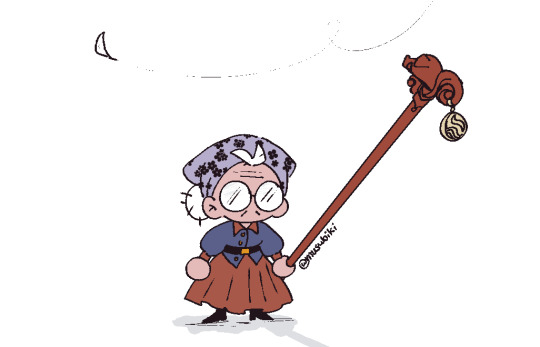
recently thinking of changing the aesthetic of madam springs
#the cat witchs guild#tcwg#tmaomal#the misc adventures of mochi and lime#madam springs#beta#art#ocs#original#i realized the merchant already has the colorful traveling npc you run into on the road vibes#and i like the idea that she has a very proper dress code to uphold the spring of lifes reputation#forces oscar to dress business casual regularly#still has a cane thats far too big for her#but make it fancier#probably one of lady magg lynns artifacts to be honest#specially made amulet holder#make her even more old lady ish#cant wait to draw her rediculous flashbacks where she goes (in my youth...)#and then cutscene to this very beautiful tall woman with normal human proportions#everyone like how the fuck did you shrink so much#okay i will admit this is so i can give oscar the dark academia aesthetic i want him to have so badly for some reason recently
190 notes
·
View notes
Text
So, You Wanna Know About?: The Evil Eye
The concept of the “evil eye” exists in virtually every culture worldwide, as do amulets such as the nazar and hamsa. It's a fundamental part of most folk groups' magic and culture, which is why we use it as a symbol for our server. But what do we know about this concept and the symbols and practices surrounding it? Let’s take a second and explore.
What Exactly Is The Evil Eye?
In simplest terms, the evil eye is “a curse transmitted through a malicious glare, usually one inspired by envy.” [1] It's believed that this glare can cause misfortune, illness, injury, death, and general misery. [3] Pregnant women, infants, young children, and animals are thought to be especially susceptible. [4]
The Evil Eye’s First Appearance
Historians are unsure of the exact date the evil eye and amulets used to ward them off were invented, however, we can find examples going as far back as ancient Mesopotamia. Texts have been found in Ugarit (located in modern-day Syria) attesting to the concept until roughly 1180 BC. [2] According to Dr Nese Yildiran, “The earliest version of eye amulets goes back to 3,300 BC … The amulets had been excavated in Tell Brak, one of the oldest cities of Mesopotamia – modern-day Syria. They were in the form of some abstract alabaster idols made with incised eyes.” [1]
The Evil Eye Travels
Various things across history such as trade, travel, colonization, and immigration have caused the evil eye to travel the world. It spread through the SWANA region at first, but soon traveled to all continents worldwide: “[The evil eye has] occurred in ancient Greece and Rome, in Jewish, Islamic, Buddhist, and Hindu traditions ... [and in] Indigenous, peasant, and other folk societies.” [4] Historians have found it difficult to trace exact lines of transmission of the idea, but it notably seemed to spread rapidly among the common folk or working class. [5] It wasn't long before its presence became known across all continents, though it has always varied across time and space. For example “In Roman times, not only were individuals considered to possess the power of the evil eye but whole tribes…were believed to be transmitters of the evil eye.” [6] This is very different from how the evil eye exists in the current regions of the previous Roman Empire, as these tribes no longer exist.
It Came With The Amulets!
One of the earliest amulets associated with the evil eye is the nazar. Its name comes from the Arabic “نَظَر” (naðˤar) meaning “sight,” with many other languages adopting this term or creating their own. [7] The blue eye-shaped bead most commonly associated with this particular amulet is “made of a mixture of molten glass, iron, copper, water, and salt, ingredients that are thought to shield people from evil.” [8] Its blue color may be because “blue eyes are relatively rare [in the SWANA region], so the ancients believed that people with light eyes, particularly blue eyes, could curse you with just one look. This belief is so ancient, even the Assyrians had turquoise and blue-eye amulets.” [9] A similar amulet adopted from the nazar is the hamsa, similarly originating in the SWANA region. [10] The two have become perhaps the most widespread and well-known amulets, though they are certainly not the only ones.
Evil Eye Across Cultures & Religions
NOTE: this is not an exhaustive list, but a jumping off point.
Judaism: The evil eye can be found across various Jewish literature, from the Tanakh to the Talmud, and even books like Pikeri Avot. [11] It’s known best as the “ayin hara” which is Hebrew for the evil eye, though it may have different names across diaspora (for example, in Jewish-Spanish languages like Ladino it might be known as “Mal de Ojo”) [12] There are various customs to protect one from the evil eye across the Jewish diaspora, such as neckbands worn by boys for their brit milah, in the regions of Alsace, Southern Germany, and Switzerland just to name one. [13] One of our Jewish server members, Yosef, says “I'm Jewish and have been all my life ... my family is eastern European and we have gone to orthodox shul and (no) evil eye and other related symbols are prevalent in my family's practice along with the practice of my synagogues ... as such I constantly carry around the symbol”
Islam: The evil eye as a concept in Islam, known as the “al-ʽayn” is common. It's believed to destroy one's good fortune or cause illness. [14] Various phrases including “Mashallah” (God has willed it) are used to ward off the evil eye – “The imperativeness of warding this all too evident evil eye off is common among local communities. Not only did the absence of a “mashallah” tempt fate but it is also believed certain individuals have the power to conjure up the dark forces of the evil eye.” [15]
Italy: The evil eye in Italian is known as the “mal’occhio.” [16] In some regions, the cornicello ("little horn") is an amulet used to ward off the evil eye. It comes from Naples and it’s usually made of red coral and pepper shaped. [17] According to Antonio Pagliarulo, “some families, depending on the region of Italy from which they come, will pin the amulet to a baby's clothing either immediately before or immediately after his or her baptism.” [18]
Ireland: In Ireland, the evil eye is known as “Droch-shúil.” [19] There are a few various Irish folktales about the presence of the evil eye that warn of its dangers. One example is the tale of King Balor. The tale goes that “Balor was a king of the Formorians, the ancient inhabitants of Ireland (before the coming of the Tuatha Dé Danann). He is often described as a giant with a huge eye in the middle of his forehead. This eye brought death and destruction [onto] anyone he cast his gaze upon. He had gained this power from peering into a cauldron that contained a powerful spell that was being created by some druids. The vapors from the cauldron got into his eye when he looked inside which gave him the power of his deathly gaze. The most memorable instance of Balor using his eye is the story of his death at the battle of Maigh Tuireadh. In this famous battle between the Formorians and the Tuatha Dé Danann, Balor fell in battle at the hands of his own grandson, the pan-Celtic god Lugh, when he thrust his spear (or sling depending on the telling) through the eye of the giant. His eye was blown out the back of his head, turning his deadly gaze on his own men, destroying the forces of the Formorians. A piece of Dindseanchas (meaning lore of places) tells us that the place where his head fell and burned a hole in the ground, later filled with water and became known as “Lough na Suil” or “The Lake of the Eye”. Interestingly, this lake disappears every few years when it drains into a sinkhole. Local mythology says that this happens to ensure that the atrocities of the battle may never be forgotten.” [20]
Germany: In German, the evil eye is known as the “Bölser Blick”, something that is cured by a variety of methods such as red string, prayer, salt, iron, and incense. [21]
Poland: In Poland the evil eye is called "złe oko" or "złe spojrzenie." [23] In some regions, they use amulets known as "czarownica" which are charms often made from herbs, metals, or stones, or specific gestures believed to ward off the evil eye. In many Polish homes, you might find them hanging on the walls. A ‘czarownica’ might also be a necklace with a pendant crafted from amber, which is believed to ward off negative energy. [22] There are also folk tales about the evil eye, such as “an archaic Polish folk tale that tells of a man whose gaze was such a potent carrier of the curse that he resorted to cutting out his own eyes rather than continuing to spread misfortune to his loved ones” [1]
Russia: In Russian the evil eye is called "дурной глаз" or just "сглаз." [23] Some Russians ward off the evil eye by bathing in running water, which carries the negativity away. Fire is also used, with young people jumping over a campfire to remove bad energy. Carrying salt or pinning the fabric of your clothing are also other simple ways to ward off the evil eye. [24]
Mexico: In Mexican culture, the evil eye (el ojo) is thought to be especially prevalent during November around the time of Dia de los Muertos, with children being particularly susceptible. There are various ways a child may get the evil eye such as from a stare of a drunk or angry person, or a person who is "caloroso," or overheated from working out in a hot environment such as under the sun or cooking over a hot stove. [25] Some may use an ojo de venado, or “eye of the deer” as a protective charm, which is only effective if “worn as an amulet around the neck at all times.” [26] As a quote from one of our staff members, Ezekiel: “I was raised in a very Hispanic area so we all wore evil eye bracelets most of the time woven from the flea market… In Mexico or some parts of Latin America, it is called El mal de ojo and it is believed that different colored evil eyes do different things.”
Rroma: The concept of the evil eye also exists amongst the Rromani people. For Rroma in Slovakia, the belief in jakhendar is prevalent, often being diagnosed and cured with jagalo paňi, or ‘coal water’ [27] Rroma in places like Brno are also thought to be particularly susceptible to the evil eye, leading to communities to find members to help protect themselves. According to scholar Eva Figurová, “This role, instead, is appointed to the village shepherd, blacksmith, or other person perceived by the community as gifted with the ability to heal, cure, and ward off the effects of negative forces, whether intentionally or not. Nowadays, among the Roma in Brno, the chanting of the zoči is a common ritual that does not require the presence of a specialist.” [28]
India: In many parts of India, people use a nazar battu to ward off the evil eye, or the buri nazar. [29] Other methods of warding off the evil eye include hanging a drishti bommai [30], mothers spitting on their children [31], or marking them with a black mark on the cheek. [32]
Ethiopia: In Ethiopian culture, the evil eye is known as the "buda." [33] It is thought to be wielded by certain people (i.e. metalworkers) and warded off by amulets created by a debtera, or unordained priest. [34]
Conclusion
This blog post only begins to touch the surface when it comes to the evil eye. The history across time and space is so expensive one can truly dedicate their entire lives to studying and still not know everything there is to know. We sincerely hope that we have provided some perspective and gave some jumping off points for further exploration.
Sources & Further Reading:
Hargitai, Quinn (2018). “The strange power of the ‘evil eye’”. BBC. https://www.bbc.com/culture/article/20180216-the-strange-power-of-the-evil-eye. Accessed 1 Nov. 2024.
Pardee, Dennis (2002). "VIII. INCANTATIONS: RS 22.225: The Attack of the Evil Eye and a Counterattack". Writings from the Ancient World: Ritual and Cult at Ugarit (vol. 10). Atlanta: Society of Biblical Literature. pp. 161–166.
Ross, C (2010). "Hypothesis:The Electrophysiological Basis of the Evil Eye Belief". Anthropology of Consciousness. 21: 47–57.
Britannica, The Editors of Encyclopaedia. "evil eye". Encyclopedia Britannica, 28 Oct. 2024, https://www.britannica.com/topic/evil-eye. Accessed 3 November 2024.
Gershman, Boris (2014). The Economic Origins of the Evil Eye Belief. American University (Washington, D.C.). Online resource. https://doi.org/10.57912/23845272.v1
Elworthy, Frederick Thomas (1895). The Evil Eye: An Account of this Ancient and Widespread Superstition. J. Murray.
WICC Authors, (2023). Nazar (amulet). https://wicc2023.org/nazar-amulet/. Accessed 1 Nov. 2024.
Williams, Victoria (2016). Celebrating Life Customs Around the World: From Baby Showers to Funerlan, p.344.
Lynn, Heather (2019). Evil Archaeology, p.167
Bernasek, Lisa. (2008) “Artistry of the Everyday: Beauty and Craftsmanship in Berber Art” Volume 2 of Peabody Museum collections. Harvard University Press. pg 12. ISBN 978-0-87365-405-0
Ulmer, Rivka (1994). KTAV Publishing House, Inc. (ed.). The evil eye in the Bible and in rabbinic literature. KTAV Publishing House. p. 176. ISBN 978-0-88125-463-1.
Jewitches Blog. “The Evil Eye.” Jewitches, 18 Apr. 2023, jewitches.com/blogs/blog/the-evil-eye. Accessed 1 Nov. 2024.
Birth Culture. Jewish Testimonies from Rural Switzerland and Environs (in German and English). Basel: Naomi Lubrich. 2022. pp. 35–37.
Evil Eye - Oxford Islamic Studies Online.” Archive.org, 2018, web.archive.org/web/20180825110529/www.oxfordislamicstudies.com/article/opr/t125/e597. Accessed 1 Nov. 2024.
“Mashallah: What It Means, When to Say It and Why You Should.” The National, 22 May 2013, www.thenationalnews.com/lifestyle/mashallah-what-it-means-when-to-say-it-and-why-you-should-1.264001. Accessed 1 Nov. 2024.
“Mal’occhio | a brief understanding (and offering).” Radici Siciliane, 17 Nov. 2020, www.radicisiciliane.com/blog/malocchio-a-brief-understanding-and-offering. Accessed 1 Nov. 2024.
Melissi, Paolo. The Cornicello: A Traditional Lucky Charm from Naples. 18 June 2021, italian-traditions.com/cornicello-traditional-lucky-charm-from-naples/. Accessed 1 Nov. 2024.
Pagliarulo, Antonio. The Evil Eye. Red Wheel/Weiser, 2023. ISBN 978-1-63341-294-1
“Irish Superstitions: The Evil Eye, Fairy Forts, and Lucky Charms.” IrishHistory.com, 14 May 2023, www.irishhistory.com/myths-legends/folk-tales-superstitions/irish-superstitions-the-evil-eye-fairy-forts-and-lucky-charms/. Accessed 1 Nov. 2024.
“The Evil Eye.” Ireland’s Folklore and Traditions, 12 July 2017, irishfolklore.wordpress.com/2017/07/12/the-evil-eye/. Accessed 1 Nov. 2024.
Katharina, Anneke. “Boser Blick: Evil Eye in German Folk Magic.” Instagram.com, 2024, www.instagram.com/p/CrO8IIeLMgu/?utm_source=ig_web_copy_link&img_index=1. Accessed 3 Nov. 2024.
Tobey, Julie. “The Meaning of the Evil Eye in Polish Culture.” Polish Culture NYC -, 7 June 2024, www.polishculture-nyc.org/the-meaning-of-the-evil-eye-in-polish-culture/. Accessed 1 Nov. 2024.
Haroush, Alissa. “42 Names for the Evil Eye and Where Did the Evil Eye Amulet Originate.” Alef Bet by Paula, Mar. 2021, www.alefbet.com/blogs/blog/42-names-for-the-evil-eye-and-where-did-the-evil-eye-amulet-originate. Accessed 1 Nov. 2024.
Sorokina, Anna. “How Russians Protect Themselves from Evil Spirits.” Russia Beyond, 3 Nov. 2024, www.rbth.com/lifestyle/331213-protect-from-evil-russia. Accessed 1 Nov. 2024.
Mexico, Na’atik. “El Mal de Ojo, the Evil Eye.” Na’atik Language & Culture Institute, 26 May 2023, naatikmexico.org/blog/el-mal-de-ojo-the-evil-eye. Accessed 1 Nov. 2024.
“The Evil Eye.” The Atlantic, 1 Oct. 1965, www.theatlantic.com/magazine/archive/1965/10/the-evil-eye/659833/. Accessed 1 Nov. 2024.
Hajská, Markéta. “The evil eye – Jakhendar” Factsheets on Romani Culture. https://rm.coe.int/factsheets-on-romani-culture-2-3-the-evil-eye-jakhendar/1680aac373
FIGUROVÁ, Eva. Contemporary signs of magic in the everyday life of Roma minority in the selected areas of Brno, focusing on magical acts like “pokerování” and evil eye. In Individual and Society [Človek a spoločnosť], 2022, Vol. 25, Iss. 3. https://doi.org/10.31577/cas.2022.03.609
Stanley A. Wolpert, Encyclopedia of India, Volume 1, Charles Scribner & Sons, 2005, ISBN 9780684313498
Kannan, Shalini. “Surprises and Superstitions in Rural Tamil Nadu.” Milaap.org, Milaap, 15 Apr. 2016, milaap.org/stories/surprises-and-superstitions-in-rural-tamil-nadu. Accessed 1 Nov. 2024.
John Abbott, Indian ritual and belief: the keys of power, Usha, 1984
George Vensus A. (2008). Paths to The Divine: Ancient and Indian (Volume 12 of Indian philosophical studies). Council for Research in Values and Philosophy, USA. ISBN 1565182480. pp. 399.
Turner, John W. "Ethiopian Orthodox Christianity: Faith and practices". A Country Study: Ethiopia Archived 2012-09-10 at the Wayback Machine. Thomas P. Ofcansky and LaVerle Berry, eds. Washington: Library of Congress Federal Research Division, 1991.
Finneran, Niall. "Ethiopian Evil Eye Belief and the Magical Symbolism of Iron Working. Archived 2012-07-12 at the Wayback Machine" Folklore, Vol. 114, 2003.
#folk magic#folk practice#folk practitioner#folk witchcraft#magic#witch#witch community#witch stuff#witchblr#witchcraft#the evil eye#evil eye#nazar#amulet#enjoy!#long post
42 notes
·
View notes
Text


Harvest Moon Green Tassel Gold Celestial Talisman Earrings ✨️
Featuring large brass moon face stars that dangle green suede tassels from u-shaped connectors. Frosted glass crescent moons are suspended in the center of each earring. The hooks are gold plated
They hang 3.5 inches
Made with nickel free materials
Buy them here
#rabbitpaws#celestial jewelry#celestial#moon earrings#autumn witch#cottagecore#moon and stars#crescent moon#moon witch#harvest moon#autumn jewelry#light academia#smoky quartz#witchy#artists on tumblr#faery#whimsigoth#witchcore#elven#medieval#art nouveau#amulet#talisman#star earrings#woodland#victorian#edwardian#academia aesthetic#hellenic pagan#moon goddess
31 notes
·
View notes
Text

Amulets of Early Christianity ~
Firstly, what are amulets?
"Amulets are objects imbued with magical properties that protect against bad luck, illness and evil. Amulets are universal and are answers to age-old needs: to be healthy; to be virile and fertile; to be powerful and successful; to have good fortune." -Occult World
Back in ancient Rome, at the beginning of Christianity, early Christians resorted to the traditional practice of using amulets to protect themselves from harm and to bring blessings. Christian preachers insisted on their fellow Christians to make the sign of the cross or use holy water or holy oil from a priest or monk as a replacement for amulets, but the use of amulets still continued to be practiced by the early Christians.
Amulets composed of animal and vegetable matter have perished throughout the centuries but amulets made in the forms of figurines, carved stones, papyrus texts, parchment, potsherds, wood, and metal have survived. Written amulets give an insight on how Christian prayers and worship effected how these amulets were made, including a collide of Paganism and Christianity in certain texts. Some amulets contained short spells with artwork of Christian symbols. This is one example of a merge between Paganism and Christianity within the writing of an amulet, “I bind you, Artemisian scorpion, 315 times. Protect this house with its inhabitants from every evil, from all bewitchment, […] from the sting of scorpion and snake.” The spell then follows with, “Give protection, O Lord, son of David according to the flesh, born of the Holy Virgin Mary, O holy, highest God, of the Holy Spirit. Glory to you, O heavenly King. Amen.”
Some amulets contained Christianity mixed with a Greco-Egyptian chant. Other amulets had chants that were dedicated to calling out for the assistance of a saint or biblical figure, a common saying in these chants were “now, now, now, quickly, quickly, quickly”. These amulets also relied on the use of words snd works from the bible, rather than using such things from non-Christian amulets.
Many amulets consist of bible passages or passages from liturgical services. Psalm 91 was popular among amulets, even with Jewish amulets. The Lord's prayer was also popular. Occasionally, amulets spoke of the correspondence between Jesus and King Agbar of Edessa, for healing and protection due to this being in Jesus's promise. Some amulets seem to have the intention of being used in rituals to exorcise evil spirits with the use of the creed.
When looking at the amulets, they show the different skills of their creators. Some amulets seem to have been written by a high skilled scribe while others seem to have been written by people who could barely write. Most amulets were found in common places, documents, letters, and personal copies of books. Some words were written as they would have been pronounced, instead of in proper Greek. This shows how some amulets were probably written by memory for chants and devotional texts.
Here are some examples of amulets
Source: Archeological Views: Christian Amulets-A Bit of Old, a Bit of New
#folk catholicism#catholic witch#christian witch#ancientwitchcraft#ancientreligion#catholic#god#jesuschrist#yahweh#amulet#occult#occulltism
20 notes
·
View notes
Text
🌿Spellwork: Herb Amulets
Herb amulets are one of the easiest spellworks a witch can make. A herb amulet can be about anything and be filled with any herb of your choosing.
Note that the more an amulet is specific, the stronger it is. Think of it like multitasking and focused task. you may be great at keeping track of seven things, but when you only focus on one thing you exceptionally well. (ever tried doing school work while watching a TV show? Haha!)
Basically, herbs have corresponding meanings. Choose your herbs, as many or little as possible.
Put herbs into a morter and crush them till the aroma is released.
Place your crushed herbs onto a cloth (colour of your choosing).
Gather the cloth up and tie it together, you may use knot magic here.
Hang where you please or wear it.
Here's mine (and my mother's) and what I intend for it to do (and what she intends hers to do.
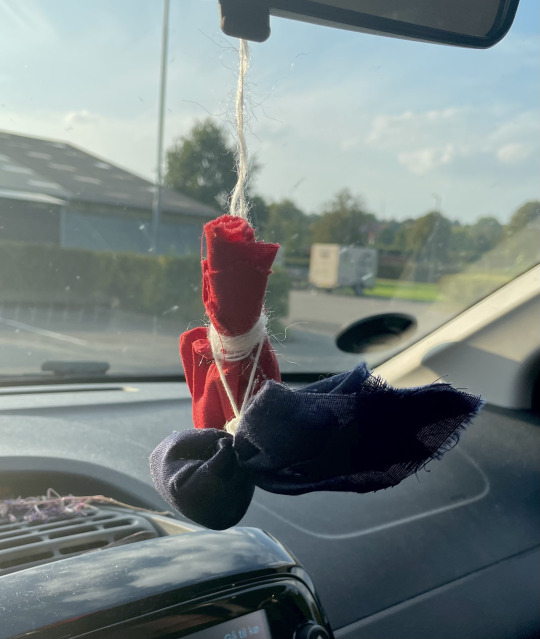
Mine is in the red cloth: I intend for it to give me good travels in my car as I wanted to hang it up in my car, as well as making sure that no matter where i go, i have a bit of a good breath with me.
Cinnamon: Adventure in life and travels.
Clovers: Gives dignity, avoids bullying.
Anise: Gives protection on travels.
Cardamom: Gives good breath and kisses.
My mother's in the blue cloth: She doesn't delve into witchcraft like I do, but she wanted to make an all around good feeling herb amulet for me.
Lavender: Kindness and love.
Cinnamon: Adventure in life and travels.
Coriander: Makes you rich.
Common Sage: Cleanses the room and brings good spirits.
Roses: Gives you kisses, hugs, and love.
Cardamom: Gives good breath and kisses.
Calendula: Sunshine and happiness.
Have fun!
#my spells#spellwork#witch#witchcraft#herbs#amulet#herb amulet#witchcraft spell#travel spell#love spell#?#protection spell#sachets#sachet
155 notes
·
View notes
Text
Together Forever
So it turns out that Danny is functionally immortal, his living and ghostly forms stabilizing each other every time he transforms. What this means for his human body is that he keeps reverting back to the age of his death- if he wants to grow up, to grow old, he will have to give up the other half of himself.
Danny could also stay a ghost instead, but it doesn’t feel right. It would be too much somehow in a way he can’t explain. (To be a ghost is to be tethered to your pain. He doesn’t notice it while he’s dead but the relief is real each time he comes back to life.)
Tucker reincarnates, like he has been for the past millennia. Each time he forgets his friends, and each time he’ll look into an ancient mirror and slowly start to remember.
It’s not just Tucker who comes back. His parents also return, again and again to each other. They never remember but it’s comforting nonetheless. On his third life after being Tucker Foley, it occurs to him that they might be soulmates; his continued existence not an unnatural blackmailing of the universe (like magic so often is) but just… skitching a ride.
Sam lives. She’s idealistic, a fighter, and ambitious. She dabbles in the dark arts just enough to help further her bright-eyed goals. Then, for a while she disappears. When her friends finally find her again, she has demons- both literal and metaphorical. She stops dabbling, and lets herself age. (She won’t stop fighting though, she never will.)
Sam dies. Danny protects her soul, and Tucker helps preserve her heart and mind. Her ghost is a fearsome and terrible thing, nearly a goddess in her own right. Death frees her from her living burdens, and for the first time in centuries she feels as light as she was in her youth.
Dani and Vlad are similar to Danny, but they are not perfect. They have to eat.
Vlad’s death was gradual. There is no single moment his biology returns to when he transforms, so he ages. He sustains his living body with his ghostly form, so like Spectra and Desiree he learns to draw energy from human emotions.
Dani was born half-dead. The condition Vlad discovered in himself as he begun to live longer and longer than any human has natural access to, she had from the very beginning. Dani doesn’t bother with vampirism though. She’s a Frankenstein and she’s ok with it; she gets her ecto-vitamins in the form an injection by Danny.
One day Dani will find out why she wanders, and why she traces the same paths over and over again. (Sam will tell her about ley lines, liminal spaces, and tears in the veil between worlds.) She’ll find places and events where the air itself sustains and strengthens her. Sun on a flower.
#Dani consumes raw ectoplasm#she’s a wandering spirit#Sam is a witch but her favorite spell is punch#I like to to think of Princess Dorothea and Sam as friends#Dorothea would give Sam Aragon’s amulet and it would be the only trinket Sam keeps after she retires from magic#Tucker would be the most grounded and well-adjusted to immortality I think#because he gets to keep his parents AND friends#Vlad would probably feel on attention or admiration maybe even love or infatuation#a real DILFY vampire type guy haha#Danny Phantom#headcanon#ficlet#if you squint you can see the dpxdc here#I’m setting up Sam to meet and have a falling out with Constantine#I didn’t mention Jazz bc low key I think she’d want a normal life but I think it’d be pretty cool if Sam and Jazz had an arrangement like#Enchantress or Sundowner have#Tucker foley#Sam Manson
134 notes
·
View notes
Text

An ocean lives within its aqua hues. As you wear it, you feel the ebb and flow of its energy. Peaceful, it lulls me into watery daydream. Like the sea, it provides clarity, a space to sit and breathe. You watch the waves within its crystallized temple, finding answers in the blue depths. Aquamarine works with the throat chakra, providing fluid expression. The throat is where the truth flourishes. a sacred space of earth roots and cosmic wonder, our voice the passage between worlds.
AQUAMARINE: "Stone of the Sea,” It connects to the depths of the ocean, allowing you to reflect and find peace with your emotions. A magical stone that allows you to communicate with water spirits. Aquamarine strengthens communication with nature spirits, deepens intuition, and provides ocean energy.
Item: Large 55mm aquamarine cabochon framed in blackened sterling silver. Comes with an oxidized sterling silver 18” chain.
Purchase From My Shop: HERE
#crystals#wicca#pagan#druid#magick#witch#goddess#witchy#aquamarine crystal#aquamarine#amulet#crystal pendant#etsyseller#etsyshop#etsyfinds#etsystore#etsy#fae#throatchakra
22 notes
·
View notes
Text
The Color of Us
Witchy Wednesday, October 11, 2023
Fic-tober Masterlist
Heart Set on Amulets Universe Masterlist
Summary: You tell Dalton you can see auras and he asks what color his is, leading to a confession about what he feels.
Warnings: fluff, confession, kissing, I think that's it. 0.9k+ words.
A/N: I Googled aura color meanings and every link had different meanings, so I just picked a random one. Also, sorry this is shorter than the other ones, but the next two Witchy Wednesdays are going to be longer! I hope you enjoy! :)

The first time you saw someone’s aura, you didn’t know what was happening. With the different colors and unique blending, a witch’s first experience can be overwhelming. Luckily, you found a good mentor quickly and learned how to block out auras… most of the time.
Like all natural talents or gifts, witch abilities have their own minds and come out on their own time. Some days, it seems like all you can see are auras. When that happens, you do your best to ignore them and respect the privacy of the people around you. Being shy, you already know how to navigate with your eyes on your shoes.
Today is one of those days where auras seem brighter than the sun. You catch a glimpse of a freshman’s green and blue swirl, fear of the future, and insecurity from the shades, and know you need to pick cute shoes since you’ll be staring at them all day.
When you return to your apartment after class, curious about what your professor is so angry about, you collapse on your couch and stare at the ceiling. Avoiding looking at people is more work than it seems to be. Someone knocks, and you look toward the door, hoping they leave.
“I’m not going away,” Dalton singsongs from the other side. “Let me in?”
You grumble as you walk to the door, eyes on the floor as you pull the door open.
“Are you okay?” Dalton asks immediately, raising his hand to your shoulder.
“I- I’m a witch,” you say quietly.
“I already knew that.”
“Right. But I can see auras and they’re really vivid today.”
“And it’s making you sick? Or something else?” Dalton asks gently, closing the door as he steps inside with you.
“No, nothing like that. It just feels like I’m violating people’s privacy, I guess. I don’t like knowing what emotions people are feeling.”
Dalton rubs his hand up and down your arm and shoulder, dropping his bag. He walks around the corner and talks to you from the hallway.
“Is this better?”
You laugh and look up as you say, “Kind of. But now I miss your pretty face.”
“You know I don’t care if you look, right? I would tell you what I’m feeling, so it’s not any different.”
You bite your bottom lip and think for a moment. “Okay. Only if you’re sure.”
Dalton walks around the corner, smiling brightly. He affirms, “I’m absolutely, positively sure.” He looks at you before gesturing toward the couch. When you’re both seated, your thigh against his, he asks,
“What does it look like?”
“It’s pretty,” you answer quietly. “It’s dark blue with little streaks of green.”
“Which means?”
“That blue is power and insight. The green is…” you hesitate, and Dalton lays his hand on your knee. “It’s fear of the future.”
“That sounds about right,” Dalton says with a nod. “Anything else?”
“Pink. Who do you love?” You don’t think before you speak and slap your hand over your mouth when you hear the question.
“Pink is love? How much pink is there?”
“A bit,” you answer as he pulls your hand away. “It’s surrounding everything else.”
Dalton uses your hand to pull you even closer, tugging your legs over his.
“You,” he whispers. “The pink is for you.”
You go silent, looking between his eyes and his hand on your leg.
“Am I dreaming?”
“You look awake to me,” Dalton answers, laughing. “I mean, you look beautiful, but awake.”
You duck your head to hide your smile, missing the sudden burst of pink and yellow you create in Dalton’s aura.
“Tell me what the other colors mean?” Dalton asks, drawing your attention back to him.
“Well, it depends on the shades, but the basics are red is energy, fire, passion, and anger; orange is creative, active, and positivity – you have an orange undertone, your creativity isn’t dependent on anything, it’s who you are. Yellow is sunny, charismatic, kindness; blue is either insecurity or power depending on the shade; pink is loving, caring; indigo is empathetic and sensitive; white is pure; black is tired, low; brown is greed; gray is holding onto something; and a rainbow is a combination of everything,” you explain, stopping after each color to examine the changes in Dalton’s.
“Interesting. And the shades tell you where on the spectrum or how intense?”
“Yeah. The ratios help determine intensity, too.”
“Can you see your own?”
“Not usually. Sometimes if I’m really emotional I can see the outer colors, but no.”
“Well, then let me enlighten you,” Dalton says, using his hand to raise your chin. “Yours is blue, obviously, because you’re powerful, white because you’re oh so pure.” You laugh before Dalton turns serious.
“And I’m pretty sure I see some green and pink in there. And if I had to guess, they’re for the same reason; like mine.”
“They are,” you admit quietly. “About you.”
“Do you think we could make both of them completely pink?” Dalton asks, raising his other hand to your face.
You furrow your brows and shake your head. “No, that’s not possible-“
Dalton cuts you off with a kiss, pressing his lips to yours. You don’t hesitate to reciprocate, grabbing his shirt and pulling yourself further into his lap. While you’re not paying much attention, you see large streaks of pink in your peripheral vision, smiling into the kiss.
Pulling back, you say, “Mine’s certainly pink now.”
“Is mine?”
“Mostly.”
“What else?”
“I charge for aura readings,” you tease, kissing his nose.
“Whatever you’re charging, it’s not enough.”
“Oh, you’re in a lifelong contract now.”
Dalton pulls you into another kiss, confident that his aura will never communicate what he truly feels for you and curious about how he can tell you.
#fluentmoviequoterfictober23#heart set on amulets#dalton lambert x reader#dalton lambert#dalton lambert fic#dalton lambert imagine#insidious#insidious the red door#witch!reader
74 notes
·
View notes
Text
Im beset by spirits and cursed items that’s why I’m just soooooo sleeepy
13 notes
·
View notes
Text
Magickal tools
Charms, amulets, and talismans are objects that are believed to possess magical or mystical properties and are often used for protection or to bring good luck.
While the terms are sometimes used interchangeably, they have slightly different meanings:
Charms: A charm is an object that is believed to have magical power to protect the wearer from harm or to bring good luck. Charms are often worn as jewelry, such as a necklace or bracelet, and may be made from a variety of materials, including metal, stone, or wood. Examples of charms include a four-leaf clover, a horseshoe, or a rabbit's foot.
Amulets: An amulet is also an object that is believed to have magical power, but it is typically worn or carried for the purpose of protecting the wearer from evil or harm. Amulets are often made from materials that are believed to have protective properties, such as certain stones, metals, or herbs. Examples of amulets include a crystal pendant, a piece of amber, or a protective talisman.
Talismans: A talisman is an object that is believed to have magical power to bring good fortune or to achieve a specific goal. Talismans are often created for a specific purpose, such as attracting love, wealth, or success. They may be made from a variety of materials, such as precious stones, herbs, or metals, and may be worn or carried as a reminder of the desired outcome. Examples of talismans include a lucky coin, a mojo bag, or a sigil.
In summary, while charms, amulets, and talismans are all believed to have mystical properties, they have different purposes and uses. Charms are worn for good luck, amulets for protection, and talismans for achieving specific goals or desires.
#charms#talismans#amulets#magic tools#magikal tools#witchblr#witchcore#witchcraft#witchlife#white witch#beginner witch#witch tips#grimoire#spirituality#book of shadows
175 notes
·
View notes
Text
I like big books and I cannot lie 🎶




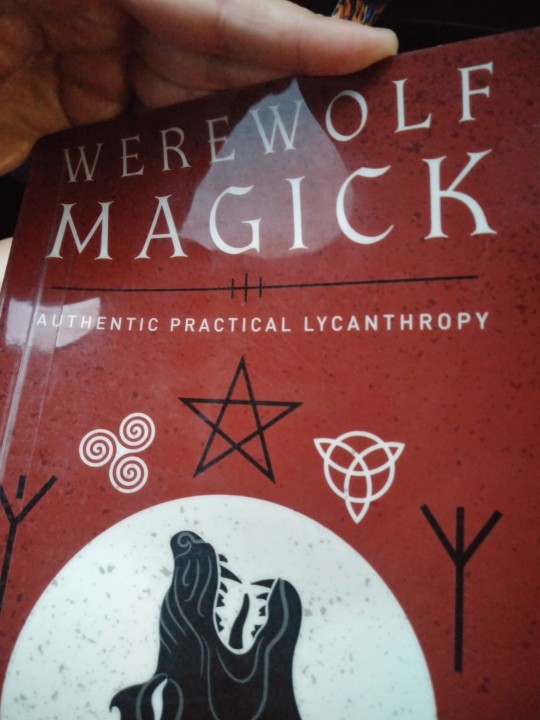
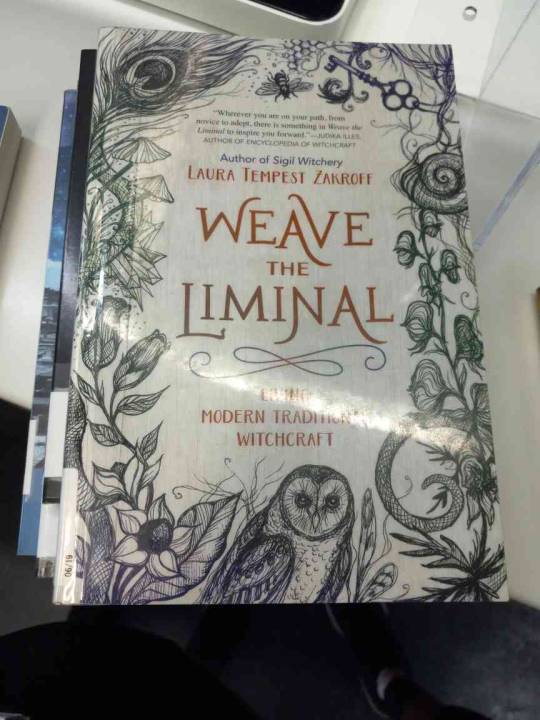

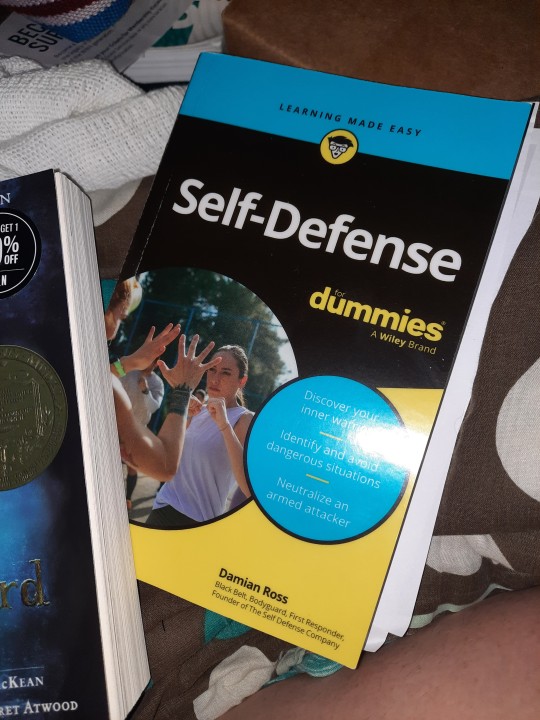
some books I gave recently grabbed from the library.
I liked and wanna buy Do I Have To Wear Black? Lots of good info in there on funerary customs. I wasn't sure I was gonna like it because of the Wicca mentions at first but I was actually pleasantly surprised as I got into it. I sort of blew through it tbh because I'm not super interested in like the Kemetic or Wiccan customs, just the Norse/ heathen and Hellenic, but the very general parts at the beginning were really informative. Mortellus is a mortician and 100% definitely knows what in the heck they're talking about.
I skimmed through the Thrifty Witch book and Tarot Interactions before bringing them back because those I just need to have/ buy. I need to buy those. Thrifty Witch would definitely be more useful to me as a resource than something to read if that makes sense.
and similarly with Tarot Interactions, that is an absolutely fantastic excellent book from what I read of it, and I definitely absolutely need to have that as a resource. I also feel like that's something I wanna take my time with, not rush.
Werewolf Magick was meh. I soared through it. I was rolling my eyes at far too much of it to take any of it seriously, and by the time I got to what I was interested in/ what might have helped, couldn't understand it because of all the weird lingo/ jargon that he'd set up at the beginning. Admittedly that's my own fault obviously for trying to skip to the end, but the first part just made me cringe too much. There's too much mixing of different practices in a way that imo honors none of them, and then mixing it with crap like Wicca to boot. I just... no, I'm good, no thank you. I had gotten it out of curiosity, expecting it to not be much and... yeah, it was what I expected.
Witch Queens, Voodoo Spirits, & Hoodoo has been fantastic so far and I have got to finish it. I started it and got distracted and it went back on the shelf and I've gotta get back into it. It starts with Annie Christmas who is none of the things mentioned on the cover, lol, but I love the way it talks about our local myths and legends. Absolutely A+ 100% yes.
Weave the Liminal is... surprisingly better than I expected so far? I'm not quite sure what to make of it. We'll see as we go.
I've had the ones in that first three pictures checked out for a while and I really need to get to them. I was hoping the Shamanism Bible would give me some words to look up, a good place to start research into that but it feels like too much of a chore. The charm bag and ancestor books I just keep forgetting I have, and I expected the New Orleans one to be a quick read but again keep forgetting it's there.
Did I grab too many books? Yes, every damn time. I have maxed out how many I can borrow from the library. Oooops. xD
I absolutely had to grab The Holy Wild Grimoire though when I saw it on the shelf because that has been on my wishlist for a while and I love checking out books before buying them. I feel much better about purchasing when I already know I like them.
#books & libraries#library#books and reading#pagan witch#witchcraft#witchblr#adhd witch#divination witch#eclectic witch#goddess of witchcraft#neurodivergent witch#oracle witch#hekate#morrigan#voodoo#voodou#new orleans#hoodoo#shamanism#shamanistic#books are magic ✨#amulets & talismans#charm bags#ancestors#ancestor magic#history#research#funerary rights & practices#death dying funerals#paganism
28 notes
·
View notes
Text
Protect Yourself from the Evil Eye: Unveiling the Mysteries
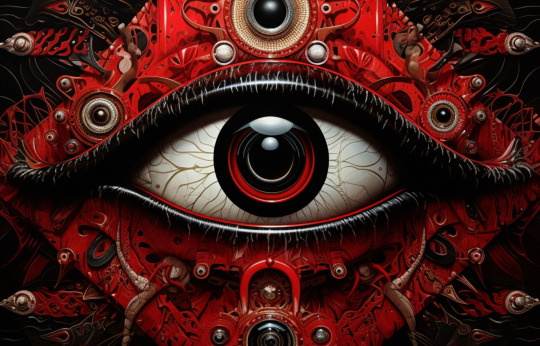
The "Evil Eye," or "Malocchio", is more than just a superstition; it's a belief that envious glares can bring about misfortune. The power of this gaze lies in the eyes of those who cast it upon you. Let's delve into the effects and defenses against this age-old belief.
-The Impact of the Evil Eye: Envious glances can take a toll on both your energy and physical health. You might experience problems like insomnia, disrupted chakra energy, stomach and digestive issues, or even persistent headaches. The effects can be subtle but profound, influencing your overall well-being.
-DIY Protection from the Evil Eye: Defending yourself against the malocchio doesn't require elaborate rituals. Simple remedies can work wonders. Consider wearing jewelry or accessories that divert attention away from your eyes, making it harder for the envious energy to reach you. It's like creating a shield that wards off negative vibes.
-Recognizing the Evil Eye's Presence: Sometimes, it's challenging to tell if you're under the influence of the Evil Eye. Watch out for rapid mood swings, unexplained fatigue, or recurring insomnia. These signs might indicate the malevolent gaze of another. It's essential to recognize these symptoms to take action promptly.
-Seeking Expert Advice: The Evil Eye, especially when directed by individuals with strong energy, can genuinely hinder your quality of life. To determine if you're affected, consider getting an "energy check" from an experienced healer. Their insights can provide you with clarity and help you regain balance.
Remember, the power of the Evil Eye lies in the belief, and while skepticism may offer some protection, it's always best to consult with experts for a more in-depth understanding. Protect your energy and embrace a happier, healthier life.
Do you think you might have an evil eye on you? Contact me directly in chat or request a FREE CONSULTATION.
#Magic#Spells#Esoteric#Witchcraft#Occult#Spirituality#Energy#Protection#EvilEye#Mysticism#Chakras#Rituals#Envy#Amulets#Divination#Wicca#Astrology#CrystalHealing#Tarot#AncientWisdom#spiritual#protection spell#spell#spellcraft#spiritual awakening#witchcraft#witchblr#witches of tumblr#witch community#beginner witch
61 notes
·
View notes
Text

28 notes
·
View notes
Text
✨Charms✨
Protection amulet, protection chant, protection charm and a good luck and movement charm
#witchblr#witchcraft#witch#baby witch#witch community#magick#magic#nature#witchcraft community#charms#protections#spells#protection#protection spell#protection charls#life#lifestyle#meditation#amulets#chants#rosemary#cinnamon#cinnamon stick#doorway#doorways#thresholds
10 notes
·
View notes